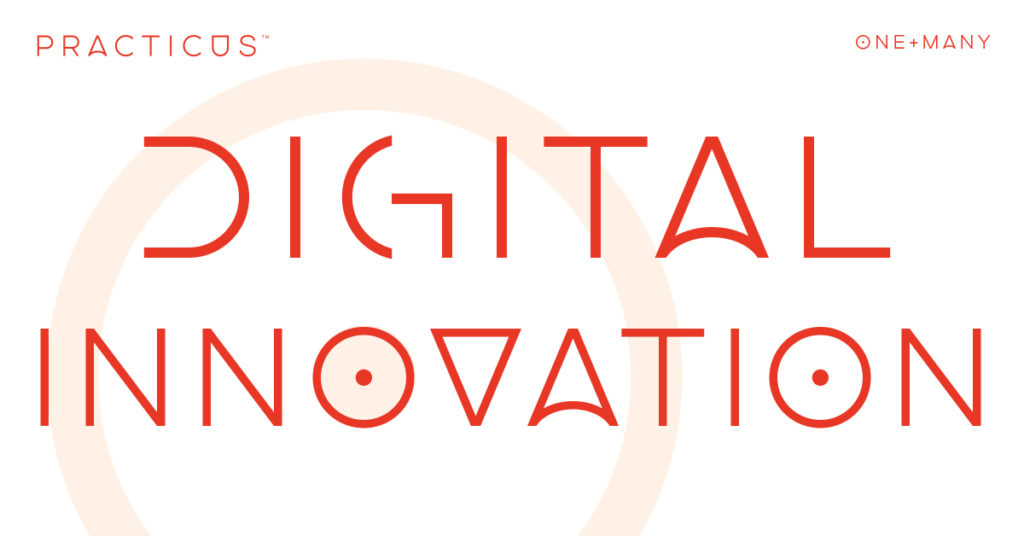Delivering the real efficiencies of digital innovation

The benefits of digital as a channel to customers are well established. What often proves more elusive for large organisations are the substantial cost savings digital thinking promises. We talk to Trevor Scott, an award-winning Digital Transformation Director who has made a career out of showing the full potential Digital has to offer.
By Darren Tolhurst, CEO Practicus
For the longest time, Digital innovation has been seen as the panacea to all business challenges. Large and often long-standing organisations have put it top of their priority list for investment – earmarking large budgets for costly pilots and expensive consultancies.
However, an increasing number of chief executives are becoming wearied by analogue pounds turning into digital pennies. It’s true that the future costs but the challenge now is that we aren’t building a digital future, we are living in it. Digital needs to pay its way and excel at driving profit.
This is the home turf of a global award-winning Digital Transformation Director and CDO, Trevor Scott. In his view, many of the real savings and productivity gains from digital initiatives have yet to be seized. For more than 10 years, he has operated as a leading interim, helping clients to really unlock their digital potential across Banking, High Finance, Fintech, Pharma, Telecoms, Passenger Transport and Logistics.
Digital alarm bells
Trevor says that most leaders are alarmed by how little opportunity is actually being seized by these initiatives. A recurring theme in our conversation is how much process complexity is retained in verifying data that organisations already possess.
“Take for example a mortgage application,” says Trevor. “There are so many different systems and people involved. Often hundreds on any one application. It’s very complex and internally sensitive to untangle so we’ve become good at presenting a digital veneer to our customers, to our bosses and to our shareholders. What’s left lying on the table is the actual end-to-end digital transformation. Customers are required to fill out information that they’ve already given the organisation – and that’s frustrating and poor service. But perhaps less thought about is how much inefficiency this represents at the bank. It’s not about working harder to satisfy our customers, it’s about eliminating huge areas of waste that get in the way of good customer service. When you begin to look properly, there are so many savings to be made. And a truly holistic approach to digitisation will give time back to the customer as well as deliver benefit to the business.”
Trevor has made it his focus to use digital capability to drive gross sales, make people more productive and to achieve it all through improving the customer experience. His success and achievements demand a double-take:
- Delivering a 5% increase in revenue against $6.1bn turnover
- Releasing £900m in cost and creating £3bn in value over 5 years
- Delivering £500m per annum productivity savings
- Creating digital marketplaces to generate high velocity sales growth
- Increasing productivity 25% and cost avoidance 10%
Commitment to change
I asked him where he thinks other digital transformation leaders may have fallen down.
“It’s about nervousness with big change. That’s a huge part of it. People are appointed to come in and make these changes but they get nervous about the implications politically within the organisation. True digital thinking doesn’t respect departmental and team boundaries, it finds the simplest and most efficient path from input A to outcome B. There are inevitably losers as well as winners in the change process and some of those losers are powerful within the organisation. Many sectors still measure personal success by how many people you have working for you and this can run counter to digital thinking. In the banking environment, this can be as many as 10,000 employees – people who equally have their own voice and influence to add and are invested to some degree in old ways of working.
“A big test of any digital transformation leader is the ability engage people at all levels and across any area in the vision, with the right message for them based on whatever incentive – small or great – that vision enables. Core to this is the sense of purpose that any true digital leader must instil in themselves and all around them. And they have to be prepared to challenge and clear away the smokescreen that many senior stakeholders will deploy to deter digital change and limit scope. It means making a commitment to do the right things for the organisation and its customers.”
If Trevor has delivered more than others, it’s because he has never shied away from the difficult elements – whether they are about complexity, about difficult stakeholders, about maintaining his independence as an interim or about following through on the decisions that ultimately enable the savings to be made.
Getting holistic thinking right
Holistic thinking for Trevor is not exhaustive thinking. There is a responsibility to avoid rabbit holes.
“It means staying at the level of highest impact for customers and the business,” says Trevor. “It’s easy for people and organisations to become obsessed with opportunities worth millions to the detriment of those that may save hundreds of millions. It means being prepared to change plans.”
It was keeping this in mind that enabled Trevor to spot and realise a £500m savings on an assignment, when a much smaller £100m opportunity had been the actual intention. “This is not untypical,” he adds. “Once you get the rhythm, delivering small successes, the bigger opportunities abound.”
The True North in Trevor’s mind is always the customer experience. It drives the benefit in all other areas. This is why real, live customer feedback is important to his holistic approach. A really strong example involved his work with a large pharmaceutical company where he helped shorten the development process for new drugs. This amounted to hundreds of millions in savings over three years and the guiding light was the feedback of patients.
“I was humbled,” says Trevor, “gaining feedback from terminally-ill patients who were trialling new drugs – people who had no actual hope of a cure, definitely no commercial interest and whose only agenda for taking part was empathy for the patients that would come after them. They are very honest with you about their experience – about where things are inefficient, about where the value is and where effort is misspent. This is a very heavy example but when you take customer feedback as a change leader, I think it illustrates what a profound responsibility you are undertaking.”

Darren Tolhurst
CEO, Practicus